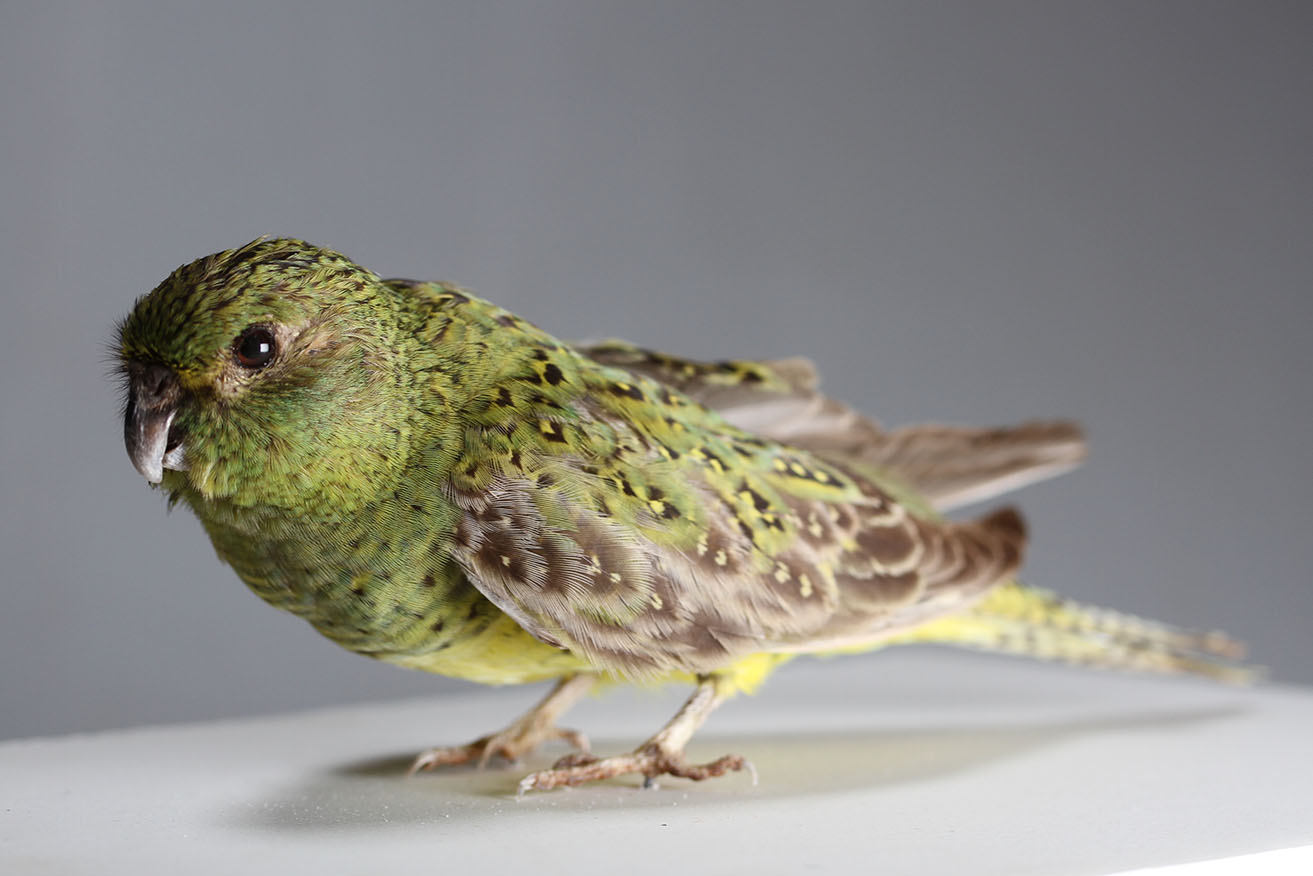Ultra-rare night parrot gives up secrets for survival

The night parrot is extremely rare but a specimen is on display at the WA Museum Boola Bardip. Photo: Western Australian Museum/AAP
In the ornithological world, few creatures rival the mysterious, almost mythical status of Australia’s frumpy-looking night parrot.
The elusive ground dweller, with its mottled green and brown plumage, was thought to be extinct until 2013 when it was rediscovered in Queensland.
Since then, it has also been detected in Western Australia’s arid interior but remains so secretive and rare that the odds of spotting one are up there with winning the lottery.
So when traditional owners found an unfortunate specimen stuck in a fence in the Pilbara in 2022 it was a gift to science that’s now paying big dividends.
Tweet from @CSIRO
CSIRO researchers have sequenced the night parrot’s genome and it should radically advance knowledge about its biology and potentially open up new conservation pathways.
They were able to complete the work using a small sample from the Pilbara parrot – the best one collected since the 1800s and only the fourth complete specimen from Western Australia.
The animal is now on display at the WA Museum Boola Bardip, giving visitors an opportunity to inspect the enigma up close.
Dr Leo Joseph is the director of the CSIRO’s Australian National Wildlife Collection and says the genome will, over time, give up the parrot’s secrets.
That includes the drivers of its nocturnal habits – a very unusual thing in parrots.
“We’ll investigate faculties like navigation, smell, beak shape and its less-than-optimal night vision,” he says.
Researchers will also be able to run statistical analyses on the genome of the parrot that was found in the Pilbara to estimate past population sizes.
Comparisons with historical samples and things like feathers found in the wild will also reveal if the parrot has lost genetic diversity, and if there are differences between eastern and western populations.
Dr Gunjun Pandey led the genomics project and is excited about how the genome might be used to better understand and manage key threats including inbreeding.
One action that might be contemplated down the track is whether to introduce individuals with high genetic diversity into populations where it is low.
Dr Nick Leseberg is an ecologist with Bush Heritage Australia and a post-doctoral researcher with the University of Queensland and spends his time studying the night parrot.
He says asking how many are left is a bit like asking how long is a piece of string, but his “bold guess” is in the order of a few hundred, with a huge margin of error.
“If you put all the numbers together, the number of birds we know about is getting up towards 40, 50 maybe even 60 in total.
“We know there’s lots of areas where we haven’t looked where they could be. We also know there’s lots of areas where we do search, but we don’t find them.”
But there’s no doubt they are one of Australia’s most threatened parrots.
“All the things that have driven its decline are there. They are still out there getting munched by cats, they’re still having their habitat burnt,” Leseberg says.
“There’s nothing being done at any significant scale to recover it, so the decline is likely continuing.”
-AAP








